How to choose suitable leveling casters
Choosing suitable leveling casters requires careful consideration of several factors to ensure they meet the specific needs and requirements of your application. Here is a detailed guide on how to choose the right leveling casters:
1. Load Capacity:
One of the most critical factors to consider when choosing leveling casters is the load capacity. Determine the weight of the equipment or furniture that will be supported by the casters. Ensure that the selected casters have a load rating that exceeds the maximum weight to be carried. It is advisable to have a safety margin to account for any unexpected changes in load or usage conditions.
2. Floor Surface:
Consider the type of floor surface where the leveling casters will be used. Different types of wheels are suitable for various floor types. For example, hard rubber wheels are suitable for indoor use on smooth surfaces, while polyurethane or nylon wheels are more appropriate for rough or uneven surfaces. If the floor surface is prone to damage, such as hardwood or tiled floors, consider using leveling casters with non-marking wheels to prevent scratches or marks.
3. Height Adjustment Range:
Evaluate the required height adjustment range of the leveling casters. Measure the distance between the highest and lowest points of the equipment or furniture to determine the necessary adjustment range. Ensure that the chosen casters can provide the required height range for proper leveling and stability.
4. Caster Type:
Leveling casters come in different types, including swivel, rigid, or a combination of both. Swivel casters allow for easy maneuverability and changes in direction, while rigid casters provide stability in a specific direction. Consider the mobility and stability requirements of your application to determine the appropriate caster type. Some leveling casters also offer a locking mechanism to immobilize the swivel function when needed for added stability.
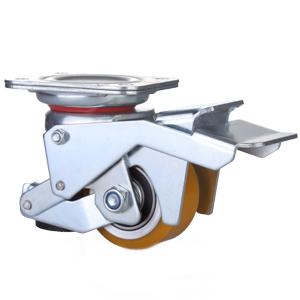
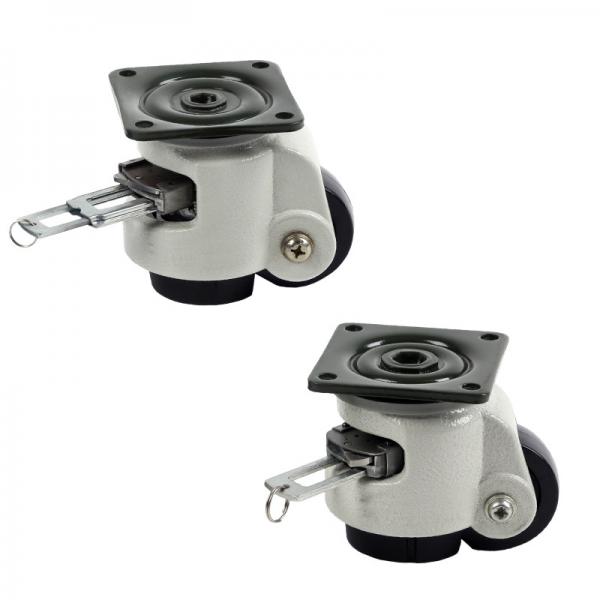
5. Mounting Type:
Check the mounting type required for your equipment or furniture. The most common mounting types for leveling casters are threaded stem and plate mount. Threaded stem casters feature a screw mechanism that allows for height adjustment by threading into the equipment or furniture. Plate mount casters have a flat plate with holes for mounting using bolts or screws. Ensure that the mounting type of the leveling caster is compatible with the existing equipment or furniture.
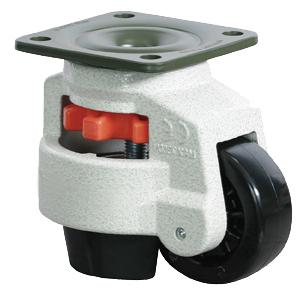
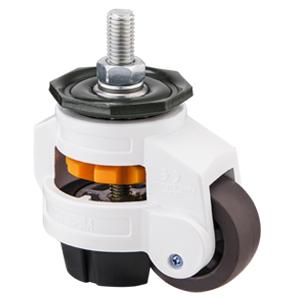
6. Adjustability:
Consider the ease of adjusting the leveling casters. Some leveling casters require manual adjustment using a wrench or tool, while others offer quick and convenient adjustment mechanisms such as spring-loaded pins, levers, or hydraulic systems. Evaluate the adjustability options based on the frequency of adjustments required and the convenience of access to the leveling casters.
7. Stability and Safety Features:
Look for additional stability and safety features that may be offered by the leveling casters. This can include locking mechanisms, foot brakes, total lock brakes, wheel locks, or additional support legs. These features provide extra stability and security when the equipment or furniture needs to be locked in place or stabilized during operation or maintenance.
8. Corrosion Resistance:
If the application involves exposure to moisture, chemicals, or corrosive substances, consider leveling casters that are made from corrosion-resistant materials or have protective coatings. Stainless steel or zinc-plated leveling casters are commonly used for such environments as they offer greater resistance to corrosion and ensure long-lasting performance.
9. Ergonomics:
Evaluate the ergonomic factors involved in your application. Consider the ideal working height and posture for operators or users. Leveling casters allow you to adjust the height of equipment or furniture, enabling ergonomic positioning that reduces strain or injuries. Choosing casters with a wide adjustment range and smooth adjustment mechanisms can contribute to improved ergonomics in the workplace.
10. Manufacturer and Quality:
Select leveling casters from reputable manufacturers known for producing high-quality products. Research and consider customer reviews, warranties, and certifications to ensure the durability, reliability, and safety of the leveling casters. Choosing high-quality casters will reduce the risk of premature failure, ensuring long-term performance and minimizing maintenance and replacement costs.
11. Budget Considerations:
Establish a budget for the leveling casters based on your requirements and application needs. Consider the balance between cost and quality, as investing in higher-quality casters can provide long-term benefits and cost savings. Remember to consider the overall value, including factors such as load capacity, durability, lifespan, and the reputation of the manufacturer.
12. Expert Advice and Consultation:
If you are unsure about the most suitable leveling casters for your application, consider seeking expert advice from manufacturers, suppliers, or industry professionals. They can provide guidance based on their experience and knowledge to help you make an informed decision. Provide them with detailed information about your specific requirements and ask for recommendations tailored to your needs.
In summary, choosing suitable leveling casters involves considering factors such as load capacity, floor surface, height adjustment range, caster type, mounting type, adjustability, stability and safety features, corrosion resistance, ergonomics, manufacturer and quality, budget considerations, and seeking expert advice when needed. By carefully evaluating these factors, you can select leveling casters that meet your application's requirements, ensuring stability, mobility, and safety.
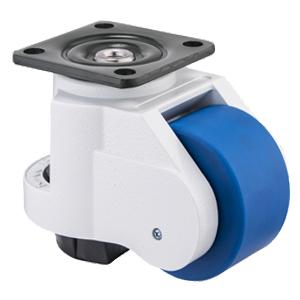
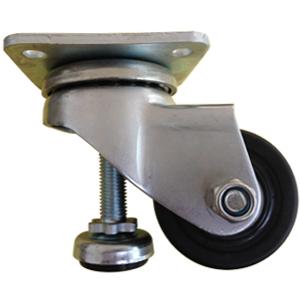

 English
English Spanish
Spanish German
German Russian
Russian Arabic
Arabic Portuguese
Portuguese Italian
Italian French
French Hebrew
Hebrew Turkish
Turkish